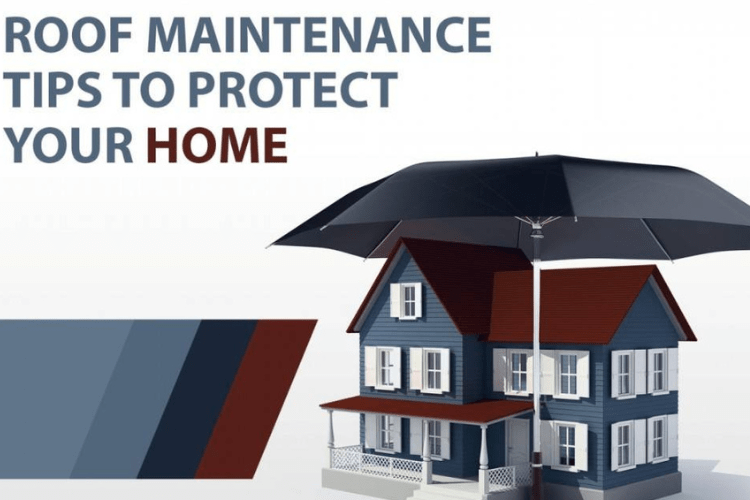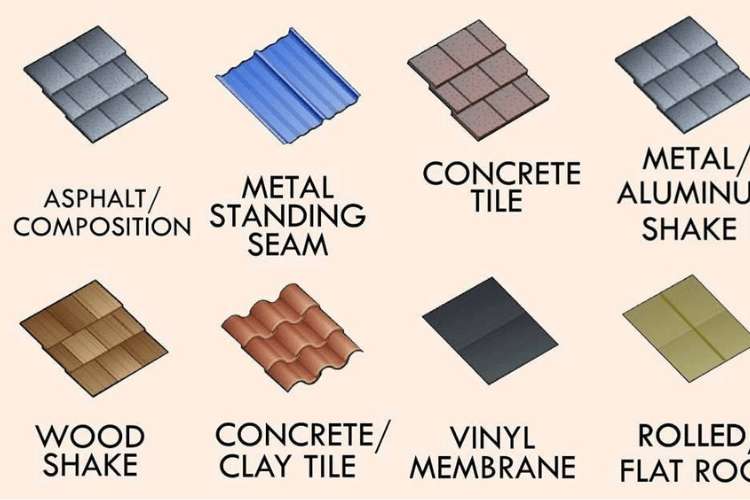As a homeowner, your home roof is one of the most vital components of your house. Your home’s roof is its first line of defense against the elements, making it important to understand the basics of DIY roof layers. In this concise guide, we’ll reveal the secret behind the layers that compose your roof and provide vital understanding for homeowners. From identifying signs of roof damage to practical maintenance tips and basic repair methods, we’ll empower you to take charge of your roof’s well-being. Whether you’re a seasoned DIY fan or a beginner homeowner, this blog will equip you with the knowledge needed to defend and maintain one of your home’s most vital components.
The Anatomy of Home Roof Layers
What are the roof layers? The structure of home roof layers includes several important components working together to protect your house. There are different roof layers. First, there’s the roof decking, which forms the structural foundation. Next comes the defensive underlayment, which offers protection. Finally, you have the visible roofing material, which completes the roof. Each layer has an important job in the roofing system. Roof decking, typically made of plywood or OSB, forms the base, while underlayment shields it from moisture. The roofing material, which can be shingles, tiles, metal, or other choices, adds aesthetics and protection. Understanding these layers is important for homeowners, as it confirms the durability and flexibility of your roof against various environmental factors.
Green DIY Home Roof Layers and Systems
Embracing green roofing solutions for your DIY home can offer various advantages. Green roof systems, also recognized as living roofs, involve the farming of vegetation on your roof. These systems provide insulation, decrease energy costs, absorb rainwater, and improve air quality. Implementing green roof layers includes a waterproof membrane, drainage, growing medium, and vegetation. These environment-friendly roofs can improve the atmosphere, reduce urban heat, and create a lovely natural space. With proper maintenance, green roof systems can be a sustainable and appealingly beautiful addition to your home while contributing positively to the environment.
Signs of Home Roof Damage
It is essential to know when your roof needs attention. Noticing signs of roof damage early is important to avoid costly repairs.
- Leakage: Water stains on walls or ceilings.
- Missing Shingles: Gaps or shingles on the ground.
- Sagging Roof: An obvious dip in the roofline.
- Clogged Gutters: Overflowing gutters can damage the roof.
- Granule Loss: Find granules from shingles in the gutter.
- Damaged Flashing: Cracked or loose flashing around roof infiltrations.
- Rot or Mold: These can show moisture problems.
Regular roof examinations can help you catch these problems early, possibly saving you from extensive and expensive repairs in the future.

DIY Home Roof Maintenance Tips
Taking care of your home’s roof is important to ensure its long life and performance. Here are some roof maintenance tips:
- Regular Inspection: Check for damaged shingles, loose or missing tiles, and signs of leaks.
- Clean Gutters: Keep gutters and downspouts clear of wreckage to stop water backup.
- Trim Overhanging Branches: Trim tree branches near the roof to avoid damage during storms.
- Seal Roof Penetrations: Make sure that roof vents and flashings are properly sealed to avoid leaks.
- Remove Moss and Algae: Clean and treat your roof to avoid the growth of moss and algae.
DIY Home Roof Repair Techniques
When faced with slight roof layers problems, you can save money and maintain your roof’s integrity with these DIY repair methods:
- Replacing Damaged Shingles: Cautiously remove the damaged shingle and replace it with a new one, securing it with roofing nails.
- Patching Small Leaks: Use roofing cement or sealant to cover small leaks or cracks in the roof’s surface.
- Fixing Flashing Issues: Reapply or repair flashing around chimneys, openings, and other roof penetrations to stop water invasion.
- Securing Loose Fasteners: Tighten or replace loose roofing nails or screws to secure roof components.
- Clearing Debris: Remove debris, leaves, and moss to avoid water accumulation and damage.
- Inspecting and Replacing Sealants: Check and refresh sealants around vents and flashing as needed.
Remember safety is the priority. Use appropriate tools and materials, and consult professional roofers for major repairs if you’re not sure about tackling a specific problem.
Installation Matters: Avoid Costly Roof Replacements
Ensuring proper roof layers installation is vital for homeowners looking to avoid costly roof replacements down the line. A well-installed roof not only provides superior safety against the elements but also prolongs the lifespan of your roofing materials. Improper installation can lead to issues such as leaks, structural damage, and premature wear and tear, all of which can necessitate a full roof replacement. By capitalizing on a professional installation, homeowners can save money in the long run by preventing these expensive repairs. Regular inspections and maintenance can further extend the life of your roof, maintaining the integrity of your home.

Roofing Material Options for Home
- Asphalt Shingles: They are cheap and come in numerous colors and styles. They’re easy to install and provide decent durability.
- Wood Shingles or Shakes: These are made from wood and give a natural, rustic look to your home.
- Tile Roof layers: Tiles can be made of clay, concrete, or even metal. They are known for their durability and can give a Mediterranean or Spanish-style look to your home.
- Slate Roofing: Slate is a natural stone material that looks elegant and lasts a very long time. It’s quite expensive and heavy, so your house needs to be structurally strong to support it.
- Synthetic Roofing Materials: Some roofing materials mimic the look of wood, slate, or other materials but are made from synthetic materials like plastic or rubber.
- Rubber Roofing: Rubber roofing is durable and mostly used on flat or low-slope roofs. It provides safety to weather and UV rays.
- Clay or Concrete Roofing Tiles: These tiles are long-lasting and can withstand harsh weather conditions. They come in different shapes and colors.
- Green Roofing: This involves growing plants on your roof, which can help with insulation and provide a unique, eco-friendly look.
- Solar Panels: While not a roofing material themselves, solar panels can be installed on your roof to generate electricity from sunlight. Which can be both globally friendly and economical in the long run.
Safety Considerations for DIY Roof Maintenance
When performing DIY home roof maintenance, your safety should be a top priority.
- Use Proper Safety Gear: Always wear non-slip footwear, a safety harness, and gloves when working on the roof.
- Check the Weather: Avoid working on a wet or windy day, as it increases the risk of accidents.
- Ladder Safety: Ensure your ladder is stable and placed on a flat surface. Have someone hold it if possible.
- Beware of Roofing Material Hazards: Be cautious with sharp roofing materials and tools.
- Avoid Power Lines: Watch out for overhead power lines and keep a safe distance.
- Stay Hydrated: Roof work can be physically demanding; stay hydrated to prevent exhaustion.
- Know Your Limits: If a task feels beyond your capabilities, consider hiring a professional.
- Emergency Plan: Have a plan in case of accidents or emergencies, and let someone know you’re working on the roof.
By prioritizing safety, you can carry out DIY roof maintenance tasks with reduced risk and ensure a secure working environment.
Conclusion
Your roof layers play a vital role in protecting your home, and understanding its maintenance needs is crucial for every homeowner. By following the guidance provided in this blog post, you can confidently challenge DIY roof maintenance and address common issues. Remember that while DIY maintenance can save you money, for important repairs or replacements, it’s always wise to consult with an expert roofing contractor to ensure the safety and integrity of your home.
FAQs
How often should I inspect my roof for maintenance purposes?
You should examine your roof for maintenance purposes at least twice a year, ideally in the spring and fall. Additionally, check after severe weather events to ensure there is no damage.
What’s the lifespan of a typical residential roof?
The lifespan of a typical housing roof varies with the material used. Asphalt shingles generally last 20 to 30 years, while metal roofs can endure for 50 years or more, with proper maintenance.
How do I prevent ice dams on my roof during the winter months?
To prevent ice dams on your roof during winter, ensure proper upper floor insulation and airing, keep gutters clean, and use a roof rake to remove excess snow from the roof when necessary.
How many layers can a roof have and how many layers of roof can you put on?
A roof layer typically contains of three primary layers: the roof decking, underlayment, and roofing material. In most cases, it’s recommended to have only one layer of roofing material, but local building codes and conditions. It may allow for additional layers in certain situations.








